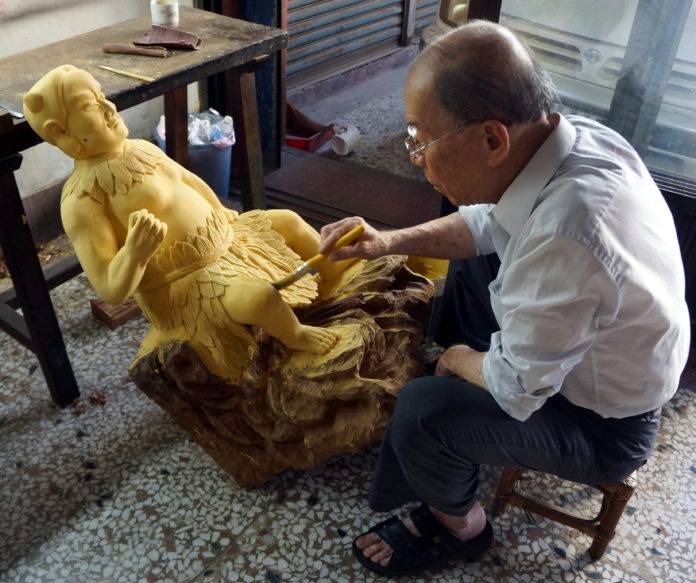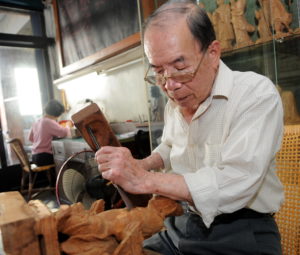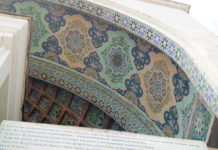
The Buddhist statuary decoration involves the techniques of making Buddhist statue from scratch, beginning with woodcarving and clay modeling. But the decoration goes further than colouring, decorating and opening the holy eyes. The process reveals the religious landscape of Taiwan. The Buddhist statuary decoration combines religion and folk art.

In Qing Dynasty, the Han immigrants travelling to Taiwan grew in numbers. The Tainan and Lukang ports of trade thrived. The introduced folk beliefs paved the way for the deity figurine and Buddha statue industry to grow substantially. Schools of skillful craftspersons from Minnan and Guangdong were employed to work near the ports. They came to live in Taiwan and had apprentices of their own to propagate their skills.
The arts of the Chinese masters originate from three separate locations, mainly Quanzhou, Fuzhou and Zhangzhou. Take Quanzhou’s Buddhist statuary decoration for example. The procedure includes selecting wood, beginning an initiation ritual, rough-modeling, fine-shaping, sanding, clay coating, applying adhesive layer of coating, lacquer lining, face painting, applying gold coating, gilding, colouring, face detailing, beard planting, initiating the God entrance ritual and opening the holy eyes.
The contemporary Buddhist statuary decoration industry withered when facing the impacts of imported cheap deity figurines. As the industry output shrank, the Buddhist statuary decoration heritage also failed to be passed down. In 2011, the Ministry of Culture has designated Shih Chih-hui as the preserver of the skill. Shih was also winner of the 2014 Crafts Achievement Award. Shih Chih-hui runs his own Buddhist statute shop, titled Shih Chih-He, in Lukang. In addition, he came from a family, where his father Shih Hsiu-li was known as the “master of knife-carving.” Shih Chih-hui went into the business when he was 16 years of age. He followed his father’s steps. Starting with painting portraits of the Buddhist statues, he eventually acquired the Quanzhou Buddhist statue decoration style. His works are delicate and refined with vivid portrayal, full of artistic value.
In Lukang, there is also a renowned Xiao Xi-Tien Buddhist statue shop. In 1987, the shop’s fifth-generation descendant, late Wu Chin-po, won the National Heritage Award. His Buddhist decoration not only adhered to the family-run Quanzhou skills, but also complied with the statue buyer’s “Five Elements Sign.” The move was exercised, according to folk belief, to achieve the auxiliary effect that heavenly God would bestow to humans. This also reflects the religious aspect of the Buddhist decorative crafts.
In Taichung City’s Leshan Boutique, artisan Ye Yong-zhu, however, is the preserver of the Fuzhou Buddhist decoration style. He is good at clay modeling techniques, revealing yet another landscape of the Buddhist statuary decoration crafts.




